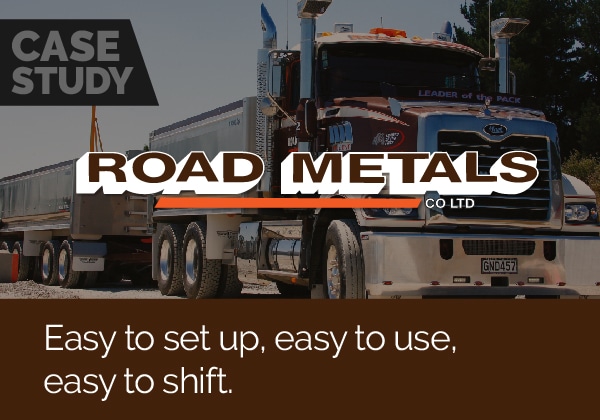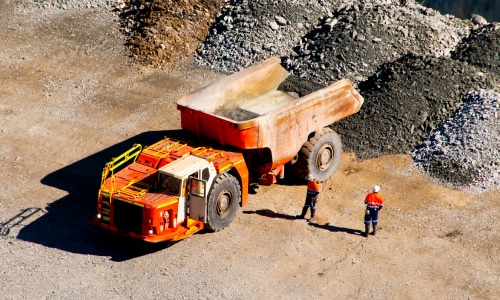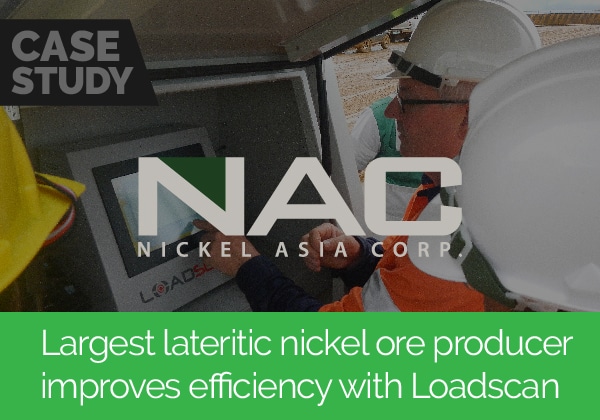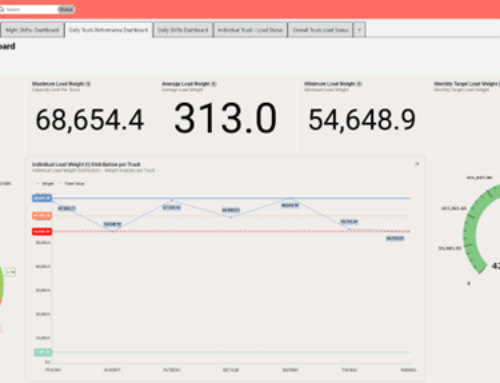Optimizing Mining Operations with Pitram and Loadscan Integration at CSA Cobar The MAC [...]
Truck Measures
Find yourself arguing with a customer or supplier about the exact measure of material being bought, sold or transported?
This is an age old problem in industries where flowable solids are carted and traded by the truck-load such as civil construction, quarry and landscape supply.
The trouble is, with traditional load measurement techniques, there is too much ‘guesswork’ involved due to the use of inaccurate measures and conversion factors.
So what are the traditional truck load measurement methods and what exactly are the accuracy issues?
Traditional truck measures
There are 6 basic methods generally used to determine truck measure, either as the sender or receiver of the load.
- Weigh using a weighbridge and convert to volume
- Weigh using an inline weighing system on loader bucket and convert to volume
- Count scoops using a loader bucket of known capacity
- Measure truck capacity and count loads
- Unload truck/trucks into hole or container of known capacity
- Survey loads or stockpiles

Why traditional truck measures are inaccurate
Here are a few of the key issues with traditional truck measures.
Weight varies with moisture content
Weight varies depending on the moisture content of the load material. Wet is heavier than dry.
A stockpile can become wet because of rain, or from deliberate wetting of stockpiles to prevent dust. This practise, which often occurs in quarries, works in the supplier’s favour.
Loads change in transit
If the material is wet when loaded, it can weigh considerably more at the point of loading than at the point of unloading as water run-off occurs in-transit.
Loads can also settle in transit. The volume of a load changes due to the product bedding down as a result of vibration, braking and bumps during transport. Often the differences between what the supplier claims was in a truck (in cubic metres or cubic yards) and what the buyer claims, is quite significant.
Conversion factors are generic
Conversion factors are typically computed on a dry day in carefully controlled conditions and do not necessarily reflect the weight-to-volume ratio of supplied materials.
Material density and moisture content can vary considerably across a quarry site and with depth. Even in a single stockpile, the density of material scooped lightly off the top can be quite different from material dug deep from the bottom of the heap.
Operator error
In practice operators do not load each bucket consistently to the same level. In fact the loader operator can’t generally see the scoop very well. And it’s definitely not practical to get out and level every bucketful!
The same is true for trucks and trailers. In practice trucks and trailers are not loaded exactly to capacity every time. They may be over or under. Loader/excavator operators often cannot even see inside the truck bins. It’s also difficult to load into the bin corners.
Variable material compaction
How the bucket is pushed into the stock-pile significantly impacts the effective volume when transferred to truck bin. For example, pushing the bucket hard into the bottom of the stockpile produces a more compacted load than loosely scooping off the side of the stockpile.
Due to the self-compaction/settlement of heaped material under its own weight, multiple bucket loads may not equate exactly to resultant cumulative heaped volumes in truck bins or in stockpiles generated from truck loads.
Volume scanning technology brings accuracy to truck measures
 More and more bulk material industry leaders are measuring their inbound and outbound loads by volume. This give much greater accuracy.
More and more bulk material industry leaders are measuring their inbound and outbound loads by volume. This give much greater accuracy.
Volumetric load scanning works on the principle of comparing empty bin profiles against loaded bin profiles for the same vehicle to compute the load volume.
Volumetric load scanning has several advantages over manually measuring truck or trailer capacity or loads:
- Volumetric load scanning measures the actual load volume in a truck or trailer bin for each measured load, regardless of theoretical bin capacity
- The system is non-contact so measuring the load does not interfere with the load volume in any way
- The system is fast and fully automated and allows for every load to be measured
- Eliminates any discrepancy around varying moisture content and settlement.
Get accurate measurement now
The LoadScan Load Volume Scanner (LVS) is the original non-contact ‘drive-through’ lorry & dump truck load measurement instrument for the accurate measurement of bulk material volumes. Contact us today phone +64 7 847 5777 (or in Australia ph+61 7-3217-0311 or the US ph +1 951-234-5933)












































